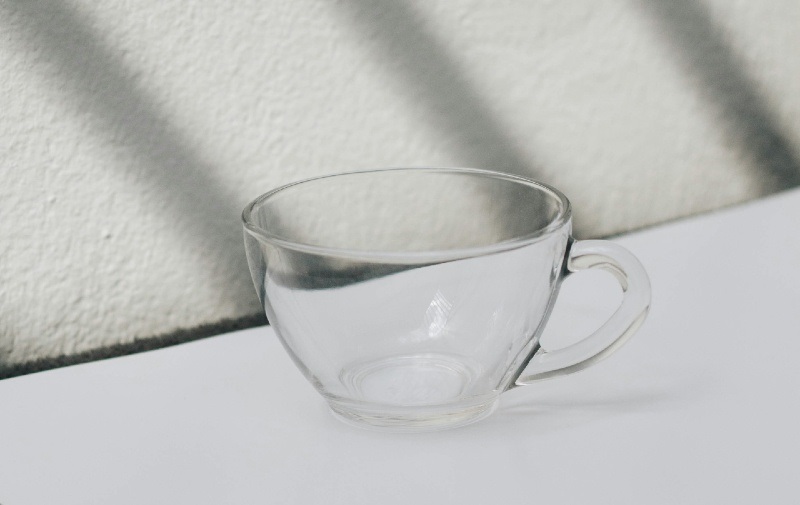Owning property is widely considered to be one of the most effective ways of building wealth. Yes, the property is the asset, but the real value of your home lies in the equity raised. Equity is essentially the part of the home that you own, which increases as you pay off your mortgage.
When you have raised enough equity, you actually have the option to access it. From buying an investment property to buying into the stock market - the world is your oyster, and your home equity is the pearl.
What is equity in a home?
In a nutshell, equity is how much of your home you actually own. Most people don’t own their homes outright - they own a slice of it, and the rest is being paid off through their home loan. Home equity represents the difference between the current value of your home and how much is owing on the mortgage. Let’s wrap our heads around this concept with an example.
Let’s say you purchased your first home for $350,000, however unrealistic that might be right now. To avoid paying lenders mortgage insurance (LMI), you put down a 20% deposit of $70,000. So you take out a $280,000 mortgage on the property to cover the difference. At this point, your home equity is $70,000 ($350,000 home value - $280,000 mortgage = $70,000).
After five years, let’s say you were a diligent home owner and ended up chipping away $50,000 from your home loan’s principal. In this time, the value of your home increased to $400,000. Now, your home equity is $170,000 ($400,000 home value - $230,000 mortgage = $170,000).
To find out how much home equity you have in your home, use our Equity Calculator.
How to release equity from your home
There are quite a few ways to access your equity, though not all of them might be available to you. Let’s discuss some of the most common ways to tap into your home’s equity.
Refinancing
One of the most common ways to access your home equity is by refinancing. When you refinance, you leave your current mortgage and switch to a new mortgage. There are two types of refinancing: internal refinancing and external refinancing. When you internally refinance, you stay with your current lender. When you externally refinance, you switch to a different lender.
Before you can refinance your mortgage, your home will need to be revalued to determine how much it is currently worth. If it has risen in value, your lender might give you the option to refinance based on its new value, which gives you access to the equity you built up by paying off your home.
However, when digging into your equity, it’s important to note you’ll still have to pay it back eventually. You’re basically taking away from the principal amount you’d paid off, so you’ll end up paying it back plus interest over time.
Buying a home or looking to refinance? The table below features home loans with some of the lowest interest rates on the market for owner occupiers.
| Lender | Home Loan | Interest Rate | Comparison Rate* | Monthly Repayment | Repayment type | Rate Type | Offset | Redraw | Ongoing Fees | Upfront Fees | Max LVR | Lump Sum Repayment | Additional Repayments | Split Loan Option | Tags | Row Tags | Features | Link | Compare | Promoted Product | Disclosure |
|---|---|---|---|---|---|---|---|---|---|---|---|---|---|---|---|---|---|---|---|---|---|
5.79% p.a. | 5.83% p.a. | $2,931 | Principal & Interest | Variable | $0 | $530 | 90% |
| Promoted | Disclosure | |||||||||||
5.74% p.a. | 5.65% p.a. | $2,915 | Principal & Interest | Variable | $0 | $0 | 80% |
| Promoted | Disclosure | |||||||||||
5.84% p.a. | 6.08% p.a. | $2,947 | Principal & Interest | Variable | $250 | $250 | 60% |
| Promoted | Disclosure |
Redraw facility
If your mortgage has a redraw facility, this is another potential way to access some of the equity in your home. When you make extra repayments towards your home loan, they go solely towards the principal loan amount, rather than principal and interest, and therefore build up your equity. If you have made enough additional contributions, you could potentially have a stack of money available for you to redraw from. Again, you’ll need to pay back this money over time plus interest.
Line of credit
A line of credit loan is another way you can access your home’s built up equity. It will typically be a more expensive loan than a typical mortgage, but you’re given an amount of credit based on how much equity you have raised in your home. One key benefit of a line of credit loan is its flexibility, because you’re only charged interest on the amount you use, and the funds are secured against the home’s equity.
Cross collateralisation
When you use your home equity as security to buy another property/properties, this is called cross collateralisation. In this situation, both the home you currently own and the home you are buying become security on your new loan. This is considered to be a high-risk home buying strategy, because if you can’t make your mortgage repayments on the property you put your home as security on, you could potentially stand to lose both.
Reverse mortgage
Another way to access your home’s equity is through a reverse mortgage. Though you might be unable to use this facility depending on your age (typically you need to be over 60 years old), a reverse mortgage is pretty much exactly what it sounds like - you borrow back the money you paid towards owning your home. The amount you have access to is capped based on your age. Typically, the younger you are, the less you are able to borrow. You’re not required to pay back the reverse mortgage while you are living in the home; rather, interest compounds until you either sell or pass away.
How can you use home equity?
Home equity is your money, so you can do whatever you want with it. Whether you want to complete some home renovations, use it to buy another property, diversify your portfolio, or sell and use your equity to buy a bigger and better property - the choice is yours.
Home renovations
Typically, if you’re completing cosmetic renovations, i.e. minor renovations, the process of accessing your equity to do so is pretty simple. Major renovations, on the other hand, can get a little more complex. This is because you’ll usually need council-approved plans and a fixed-price building contract ready to go before you can sort out your finances.
Completing renovations can be a great way to add to your equity even further by increasing the value of your home. For example, if you borrowed $10,000 from your equity to spend on a new kitchen, and doing so increased your home’s value by $30,000 - boom! You’ve just made $20,000 in equity.
Unfortunately, pouring money into your home doesn’t necessarily equal higher home value. You’ll need to make sure the improvements you’re making are actually going to add value to the home, otherwise, you might overspend instead of increase equity.
If you don’t have $50,000 to splurge on renovations, there is no shortage of cheap renovation ideas scattered all over the internet. Plus, when renovating yourself, you’ll gain a newfound respect and adoration for Bunnings. When done right, renovating your home can be a great way to improve your quality of life whilst simultaneously putting equity right into your back pocket.
Buying a second property
If you’ve got enough equity available, you could potentially use it to purchase an investment property. Buying an investment property can be a great way to build up your property portfolio, if that’s something you’re looking to do, but it comes with some considerations.
Typically, you’ll only be allowed to access 80% of your home’s value minus any debt owing on your mortgage. Using the example from earlier, you could access $320,000 of the home’s value (from $400,000), minus the $230,000 owing, which is $90,000. So $90,000 is the actual equity available, compared to the $170,000 of equity you’ve accumulated.
Buying an investment property can be a great way of securing a passive income through rental payments, while giving you the potential to accelerate your wealth growth with capital gains. You could also negatively gear the property, and claim the potential tax benefits that might apply to you.
Despite its benefits, it’s important to remember that by taking on a second mortgage, you’re now responsible for making two mortgage repayments each month. Keep in mind that there could be times when the property isn’t tenanted, or when a massive expense comes out of nowhere and throws your budget out of whack - this won’t stop your mortgage obligations.
Basically, before you buy a second property, make sure you can really afford it, in both the good and potentially bad times. Because if you can’t make your mortgage repayments, you could end up in big trouble, and it’s better to be safe than sorry.
Investing in other assets
Another way you could use your home equity is to invest it in other assets like shares or exchange-traded funds (ETFs). This way, all of your money isn’t tied into one big asset, i.e. your home, and you have a more diversified investment portfolio.
Also known as ‘gearing’, you could borrow from your equity to invest in individual shares or ETFs. Any returns or dividends you earn from this can be later put towards paying off your debt. Plus, interest paid on your investment loan (the equity you borrowed to buy the shares) can be listed as a tax-deductible expense.
Investing in other assets using your home equity isn’t without risk. If you invest a large chunk of money into one company, for example, and then it goes under, you stand to lose all of your money. Investing in other assets can be profitable, but it can also become a detrimental loss.
A quick note from Moneysmart: Using home equity to invest in other assets isn’t recommended for new homeowners, as they’ll need to use their home as collateral if they make a loss (which is a big no no). But it is something often done by more established property investors.
Selling to buy another property
The last option we’ll talk about for now, so you’re not reading this for the next hour, is selling your home and buying another property. You could use the equity raised in your current home as a deposit on another one once you’ve sold, so you’re not tied up by owning two properties. This can be a great stepping stone to go from one house to an even better house, without breaking the bank saving for a deposit.
In this scenario, you might need to look into breaking your mortgage, which can be quite expensive depending on whether you’re in a fixed or variable agreement. There could be fees involved in switching to another lender, but it could also end up saving you money over the long haul. In some cases, you could take your mortgage with you. But in most cases, finding a new mortgage with a better rate (refinancing) is the ideal option when buying and selling.
Pros and cons of accessing home equity
Using your equity might seem like a no brainer, right? There are so many ways to access it and so many things to do with it, but is it really worth tapping into your home equity? Before you decide whether it’s the right move for you, let’s discuss some of the pros and cons of using home equity.
Pros
- Access to money: The biggest, most obvious benefit to accessing your home’s equity is the large amount of money you have access to. As mentioned, you can use this money to continue to grow your wealth, or even just take the family on an expensive holiday.
- Boost value of home if renovated: As we mentioned earlier, if you use the equity to add value to your home, you could end up with even more equity.
Cons
- Larger repayments owed: When you tap into your equity, you’re essentially undoing all of the hard yards you put into paying off your mortgage. This means you’ll likely need to pay larger instalments, because you’ve got a higher principal and will therefore be charged higher interest.
- Risks: Depending on what you choose to do with your equity, there is likely going to be some risk involved.
- Interest compounds over time: Depending on how much you borrow and how long it takes you to pay it back, you could end up paying a stack more in interest. Whether you end up better off will depend on what you used the money for and whether you made a profit.
What is negative equity?
Unfortunately, sometimes owning a home doesn’t mean equity in the bank straight away. Things like falling house prices can cause what’s called ‘negative equity’, which is when your property is worth less than what you owe on your mortgage.
Again, let’s quickly illustrate this concept with an example. Let’s say you purchased a unit for $450,000. You saved a 20% deposit ($90,000), so your mortgage is $360,000.
Two years later, your home’s value drops to $350,000, but you only managed to pay off $5,000 from your principal loan amount; this would mean you have negative equity of $5,000.
Properties generally appreciate in value, but there is always the possibility that yours will decrease in value. While property is considered to be a ‘safer’ form of investing (compared with assets such as shares), there is always the possibility that you could end up with negative equity at some point.
How to raise equity in your home
If you don’t currently have enough equity in your home to do anything with it, there are a few ways you can increase your home’s equity over time.
Extra repayments
The most common way to increase your equity is by making extra repayments. When you make additional repayments, you’re not paying any interest - you’re only paying off the principal amount. Of course, this reduces your overall loan balance, which reduces how much interest you’re charged. Interest is only charged based on how much you have borrowed. So making extra repayments reduces your principal and interest, which could allow you to make even more extra repayments. Chipping away at your home loan’s principal is what accumulates your equity.
Renovating
We’ve mentioned it a few times, so we won’t go into it again, but renovating to increase your home’s value can raise your equity. By doing this successfully, your home value rises more than it would over time with regular inflation, leaving you with more equity available.
Use an offset account
You could consider using an offset account to build your equity. An offset account is a transaction account that’s attached to your home loan. Any money that’s sitting in this account ‘offsets’ the debt you’re charged interest on. Basically, if you have a mortgage of $300,000, but you have $50,000 sitting in your offset account, you will only be charged interest on $250,000. Having an offset account can be a useful tool to pay off your home loan quicker, thereby increasing your equity.
Saving.com.au’s two cents
Home equity could open a lot of doors for you. You could try your hand at DIY renovations, or you could become the next Wolf of Wall Street - the options are pretty endless. If you’re considering tapping into your home equity for the first time, and you’re a bit shaky about it, you could consider speaking with a financial adviser about whether using your home’s equity is the right strategy for you.
Image by Jaye Haych on Unsplash

Ready, Set, Buy!
Learn everything you need to know about buying property – from choosing the right property and home loan, to the purchasing process, tips to save money and more!
With bonus Q&A sheet and Crossword!






 Harry O'Sullivan
Harry O'Sullivan

 Denise Raward
Denise Raward



